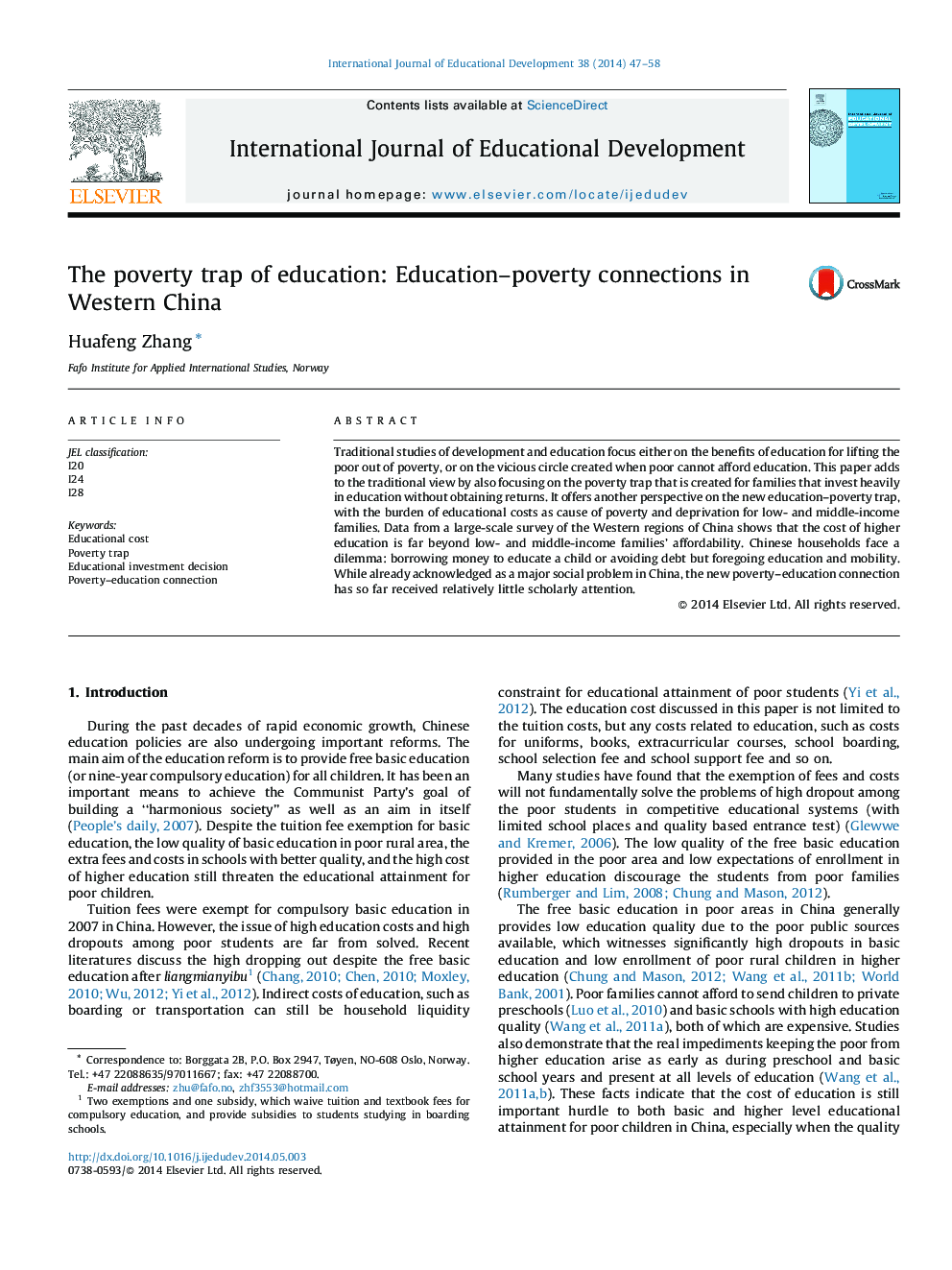| کد مقاله | کد نشریه | سال انتشار | مقاله انگلیسی | نسخه تمام متن |
|---|---|---|---|---|
| 356070 | 1435120 | 2014 | 12 صفحه PDF | دانلود رایگان |
• A large-scale survey shows that high out-of-pocket educational cost is far beyond families’ capacity.
• Two types of education–poverty connections co-exist in contemporary China due to the high educational cost.
• Children either drop out early from school, or their families acquire debt and invest heavily in education.
• Education related debts create a new kind of poverty trap, when graduates cannot find good jobs.
• Burden of educational costs becomes the cause of deprivation for poor families while they try to break the traditional trap.
Traditional studies of development and education focus either on the benefits of education for lifting the poor out of poverty, or on the vicious circle created when poor cannot afford education. This paper adds to the traditional view by also focusing on the poverty trap that is created for families that invest heavily in education without obtaining returns. It offers another perspective on the new education–poverty trap, with the burden of educational costs as cause of poverty and deprivation for low- and middle-income families. Data from a large-scale survey of the Western regions of China shows that the cost of higher education is far beyond low- and middle-income families’ affordability. Chinese households face a dilemma: borrowing money to educate a child or avoiding debt but foregoing education and mobility. While already acknowledged as a major social problem in China, the new poverty–education connection has so far received relatively little scholarly attention.
Journal: International Journal of Educational Development - Volume 38, September 2014, Pages 47–58
